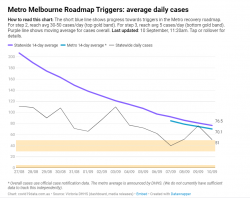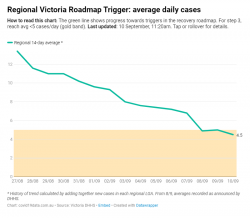Major
Established Member
- Joined
- Jan 21, 2011
- Posts
- 4,648
- Qantas
- Bronze
- Virgin
- Gold
Apparently NZ has 120 active cases at the moment. I thought they were doing better than that
As at 9.00 am, 10 September 2020
As at 9.00 am, 10 September 2020
| Total | Change in last 24 hours | |
|---|---|---|
| Number of confirmed cases in New Zealand | 1,441 | 4 |
| Number of probable cases | 351 | 0 |
| Number of confirmed and probable cases | 1,792 | 4 |
| Number of recovered cases | 1,648 | 9 |
| Number of deaths | 24 | 0 |
| Number of active cases | 120 | -5 |
| Number of cases currently in hospital | 3 | -1 |



















